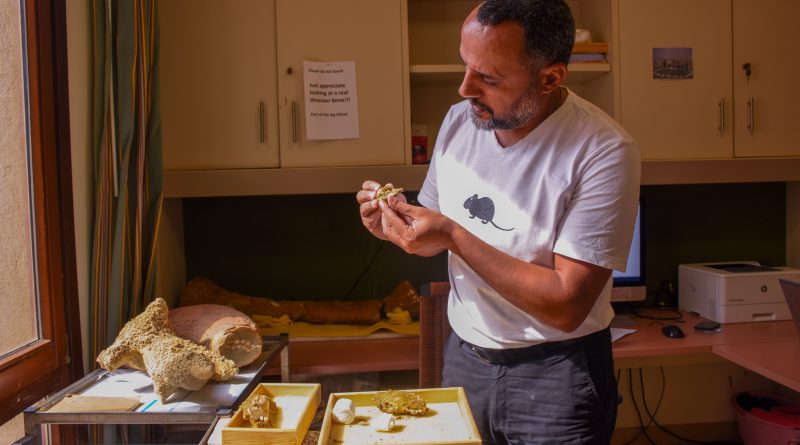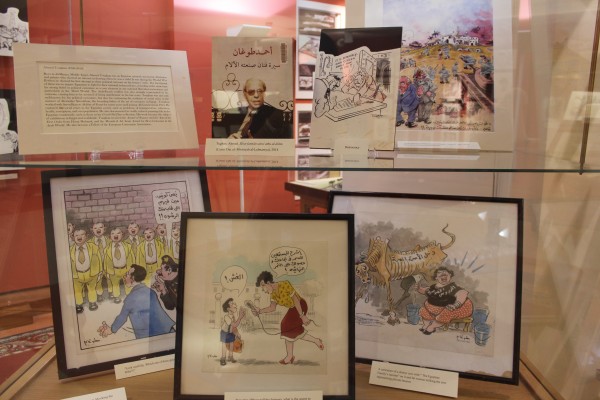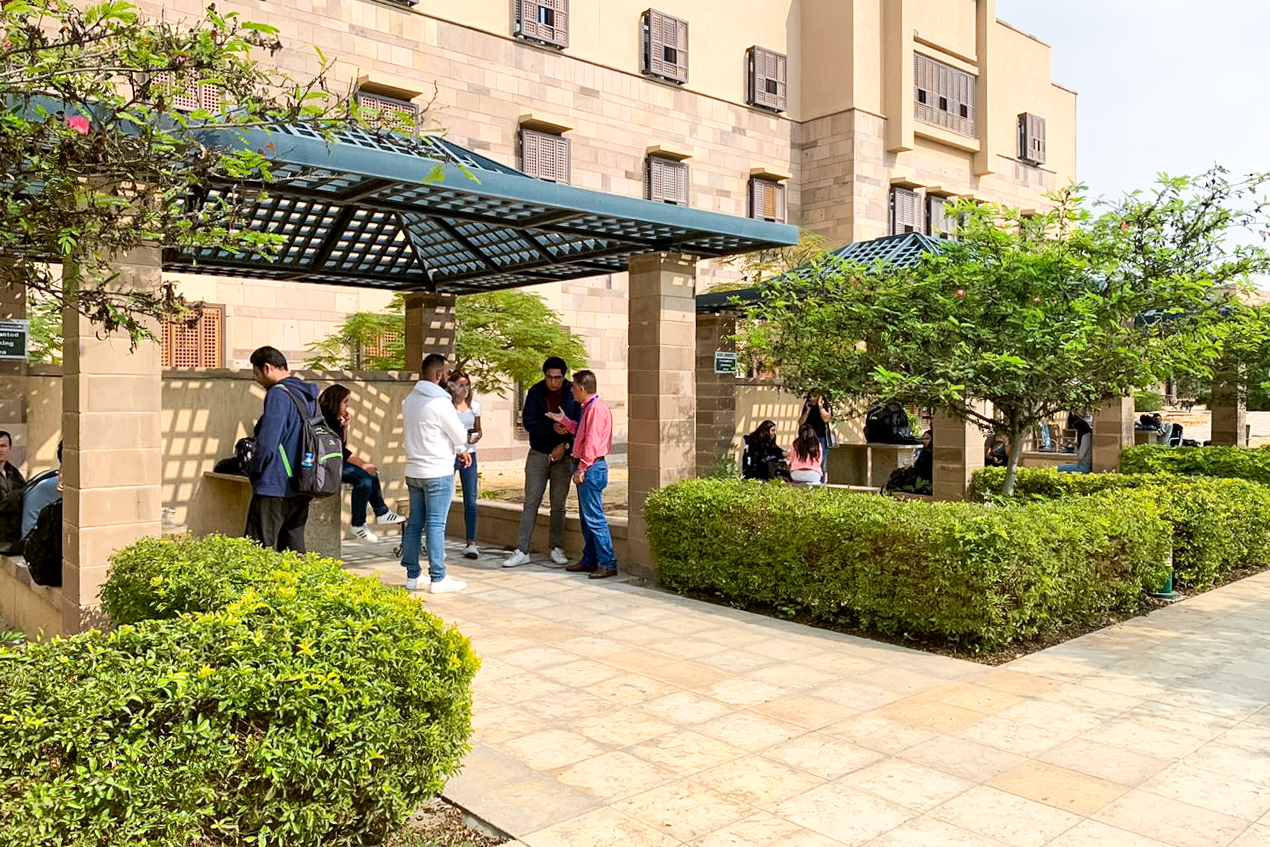Hesham Sallam: The History Digger
By: Abdurrahman Radwan
@AbdurrahmanRad7
If you were to pass by the Biology Department, you would likely find a 40-year-old professor surrounded by dozens of fossils, lecturing students about Egypt’s natural history.
That person would be none other than Hesham Sallam, the history digger. Whether excavating the rich deserts of Egypt for dinosaur fossils or cutting samples out of meteors, Sallam is a modern day palaeontology version of Indiana Jones.
But this journey came about as a mere trick of fate; palaeontology was hardly Sallam’s first choice when he was a high school student trying to decide what to study at college.
Like many others of his generation, he was determined to pursue the engineering track that was highly coveted by many students at the time.
“My grades led me to go to the Faculty of Science, it was the only option back then and the faculty selection system forced me there,” Sallam explained.
And so, his journey with Geology and Palaeontology at Mansoura University began.
As his passion for the subject matter grew, his grades began to reflect it – Sallam ranked first in his cohort. That encouraged him to pursue a Masters degree at Mansoura University at the same faculty where he had earned his Bachelors.
After earning his MA at his alma mater, Sallam was then faced with the harsh reality that there were limited employment opportunities in his field of study in Egypt.
“Once I finished my Masters, I discovered that the vertebrate palaeontology scope is dominated by foreigners, and barely any Egyptians [are] working in this field,” Sallam explained.
Sallam’s motives to further his studies in vertebrate palaeontology were not the most pragmatic; the field’s future seemed uncertain as there weren’t many Egyptian experts who could mentor him through the journey.
“I decided to study Vertebrate Palaeontology for a patriotic reason. I decided to help Egyptians to discover their treasures that were buried in the desert,” Sallam added.
His pursuit was risky, but then he got a big break.
“The hope was revived again when I received a full scholarship from Mansoura University to study Vertebrate Palaeontology at the University of Oxford,” Sallam explained.
After receiving his PhD, he then returned to Egypt with a vision of establishing a local center for palaeontology. After years of working with fossils from the Egyptian desert, he established the Mansoura University Vertebrate Palaeontology (MUVP) – nicknamed the “Sallam Lab” – at the Faculty of Science at Mansoura University.
The MUVP Sallam Lab is a palaeontology laboratory where researchers discover and process fossils found in the country in an attempt to unveil Egypt’s natural history.
When developing the center, he had hopes for “Egyptian hands” to be working with him, but that posed its own challenges.
“The most challenging part in the process is the field trips, which can last for weeks in the desert with no access to network or internet connection,” said Sallam.
Surprisingly, he found enough enthusiastic young scholars to help him with his vision. He even found female scholars who were interested in such endeavors.
“The process was very challenging. The mindset of the families of the scholars did not even approve for them to travel for one day and return, but with the success they achieved, one of my students, Sanaa Elsayed, is now doing her PhD in Michigan University, and her family is now supporting the process and even encouraging her,” Sallam said.
Shouroq AlAshkar, another of Sallam’s students in Mansoura University and a research assistant at AUC, also went through a transformative process.
“[At first] my family was not encouraging my participation in Sallam Lab, but with the encouragement of Dr. Hesham, everyone now supports me and encourages my work.”
Soon, the lab began to earn global repute his team discovered fossils of previously unknown dinosaur species.
In 2018, Sallam Lab earn global repute when it made its biggest discovery at the time – a previously unknown species of sauropod dinosaurs – in the Dakhla Oasis in the New Valley Governorate in Egypt’s Western Desert.
The sauropod, named by his team as Mansourasaurus shahinae, is one of the largest land animals of the Cretaceous period, a herbivore with a long neck walking on all fours some 70- 80 million years ago. The discovery was groundbreaking because it proved that large dinosaurs of this type moved across continents, in this case between Africa and Europe. It was the missing link palaeontologists had been looking for.
The discovery was published in the Nature Ecology and Evolution journal, one of the most influential palaeontology publications in the world.
In April 2020, Sallam joined AUC as an associate professor at the institute of Global Health and Human Ecology but also still supervises “Sallam Lab” in Mansoura University.
Since then, Sallam has been working in developing geology and palaeontology courses for AUC students. He even organized field trips to Wadi Al-Hitan (Valley of Whales), a fossil-rich area in Fayum, that included AUC students during the Spring 2021 Semester.
Sallam has a vision of facilitating science for young scholars and even spreading it to a wider audience. To help with this, many of his lab’s discoveries are named after expressions that come from common Egyptian words. For example, the aforementioned dinosaur was named Mansourasaurus shahinae “refers to Mansoura University, the place where we processed our research, and the second word refers to my wife Mona’s last name – Shahin,” Sallam said.
In August, the lab discovered a fossil of a four-legged whale species named Phiomicetus Anubis which lived more than 40 million years ago. The first word refers to the Fayum Governorate, where the fossil was discovered, and the second word refers to the Ancient Egyptian God of death Anubis.
This was quickly followed by the discovery in October of a tiny rodent – which the lab named Qatranimys Safroutus – considered to be the ancestor of many mice and rodents today.
The first word refers to the Qatrani district in Egypt where they discovered the fossil, and the second refers to the word safrout, which refers to a very tiny creature in Egyptian slang.
While being interviewed by The Caravan, Sallam was wearing a T-shirt with a small mouse printed on the front.




